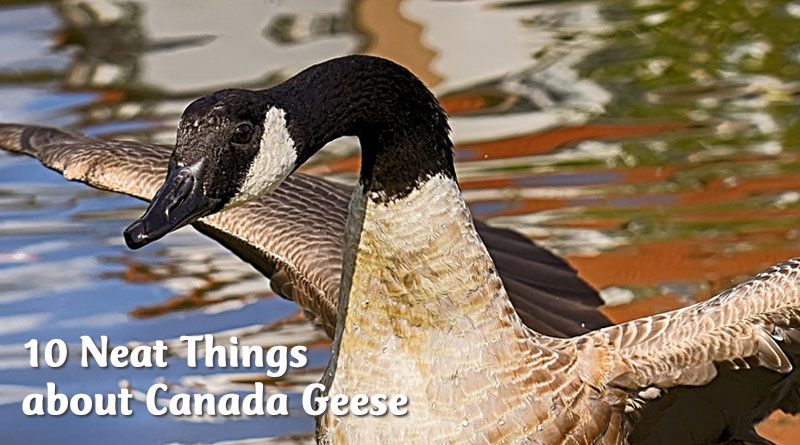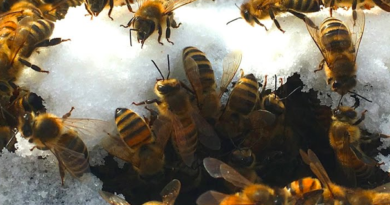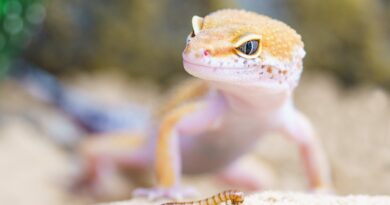About Canada Geese
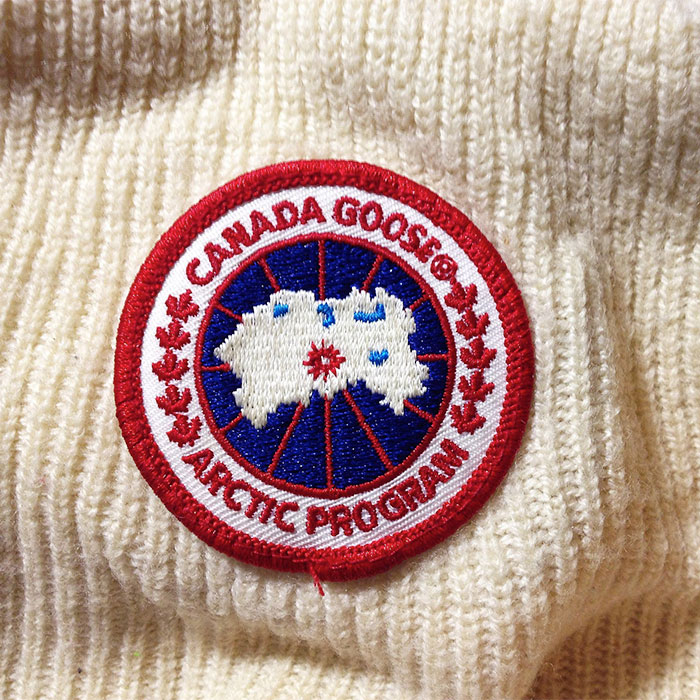
1. More than just a jacket.
“Canada goose” may conjure up visions of a warm, fur-trimmed winter jacket with a high price tag and a lot of caché. The other Canada goose, or Branta canadensis, is the varmint that poops all over parks, parking lots and backyards near water. It is long-lived and tough as an adult, so it has become invasive in areas where it is not native, including northern Europe, New Zealand and Japan. Read on, though, to learn more about this noble bird.
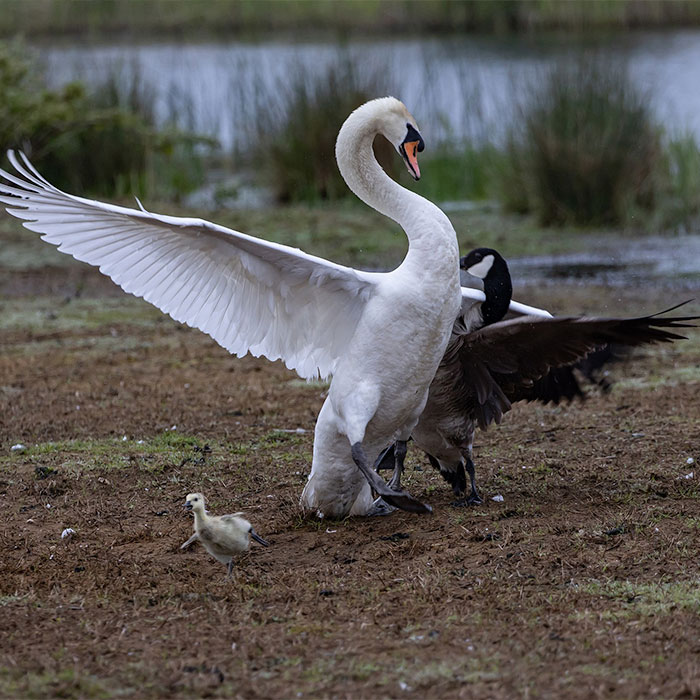
2. Take that, you blackguard!
Canada geese have been known to be quite aggressive as far as their mates and goslings are concerned. In one instance, a big Canada goose had its territory accidentally (we presume) invaded by a smaller goose. It was attacked by the bigger bird which forced its head down in the mud until it suffocated. If you approach a goose with goslings, be prepared to be accosted with much flapping of wings, hissing and running attacks that can include bites and pecks.

3. Not dead yet.
During the 19th and early 20th centuries, the giant Canada goose (Branta canadensis maxima), which breeds in central Canada, was hunted almost to extinction. A well-meaning American, one Harold Hanson of Minnesota, created a conservation program in 1962, that has been overwhelmingly successful – so much so, that it was a flock of these birds that brought down U.S. Airways Flight 1549 and caused it to land in the Hudson River on January 15, 2009.

4. A family man, er, bird.
Canada geese mate for life. When one dies, the other may find a new mate, but not necessarily. The male’s job consists mainly of guarding the nest while the female broods. She lays two to nine eggs (usually about five) and sits on them about 23 out of 24 hours. Every hour or so, she flips her eggs over with her bill to make sure they’re warm on all sides.
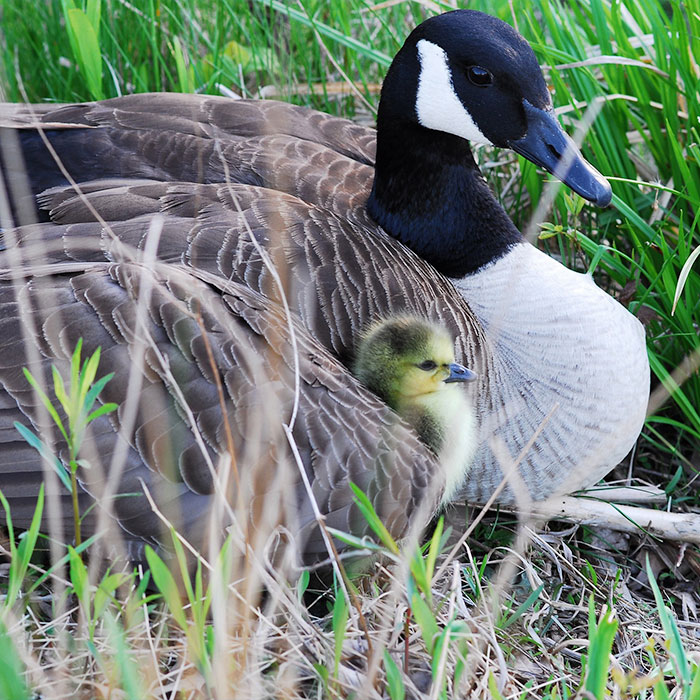
5. Let’s p arty!
Most females take periodical breaks that last 10 minutes or so, but some will save up the time and take a whole hour. After covering the eggs with down and bits of grass, mother goose joins her joyful hubby and they celebrate for a few minutes before she takes a bath, stretches, eats and gets some exercise. Then it’s back to work. When very young, the goslings need to have their bodies warmed by Mom every 15 minutes or so. They receive this blessing under her wings.
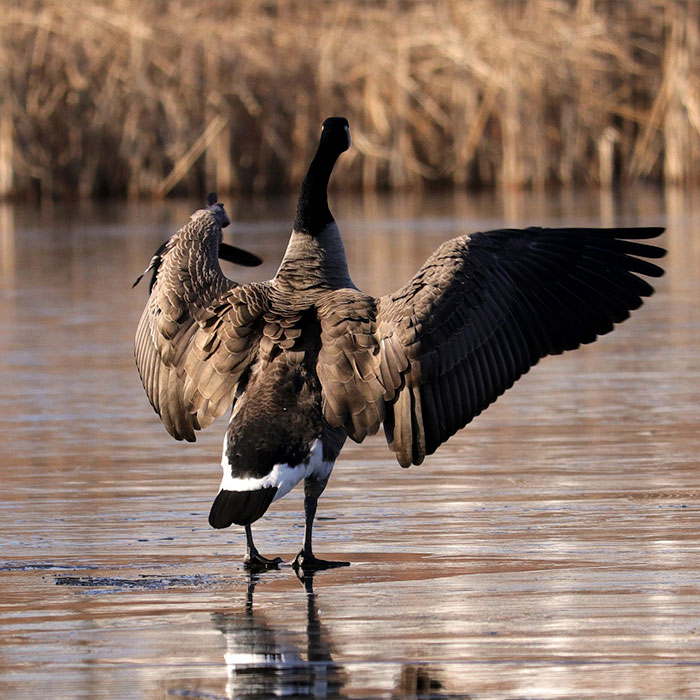
6. Long lived.
The Canada goose generally lives between 10 and 24 years. The oldest recorded was 30 years plus a couple of months.
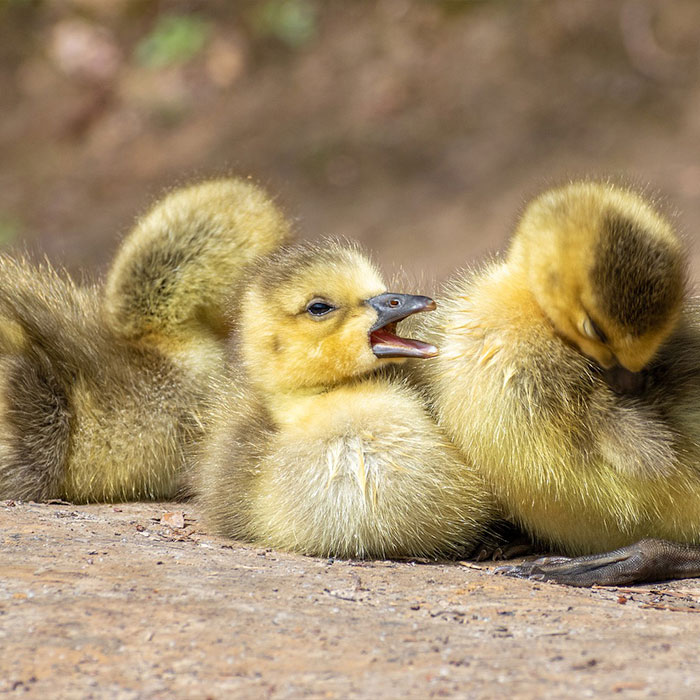
7. Listen up, I have something to say!
A very vocal bird, they have at least 13 different sounds, ranging from low clucks and murmurs, which they make while feeding, to wild, loud greetings and alarm calls. The female has the lower voice. While still inside the egg, the gosling is able to communicate with its mother if it’s distressed or even just content.
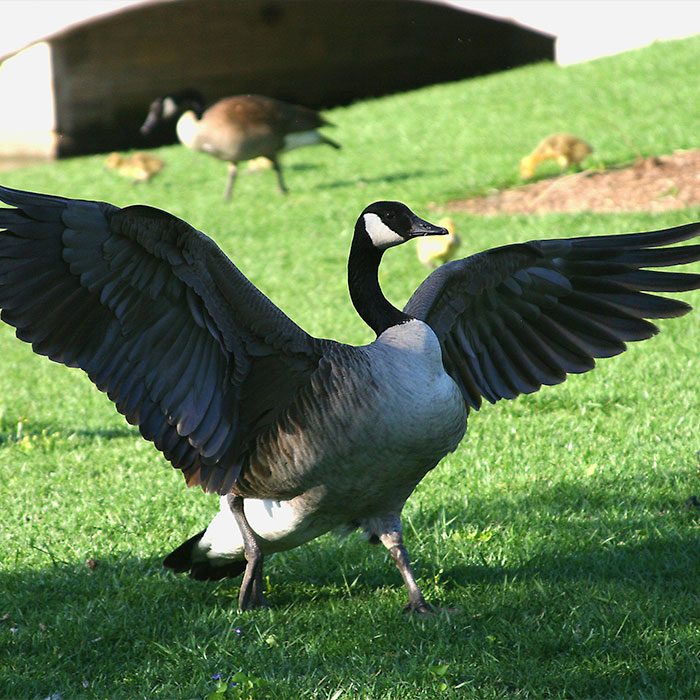
8. Oh no! I can’t fly!
The annual hatching period coincides with the annual molting period, when the geese lose their flight feathers. When this happens, they are unable to fly, which may be the reason they have learned to be so aggressive on the ground. They regain their ability to fly just as the goslings are about ready to do the same.
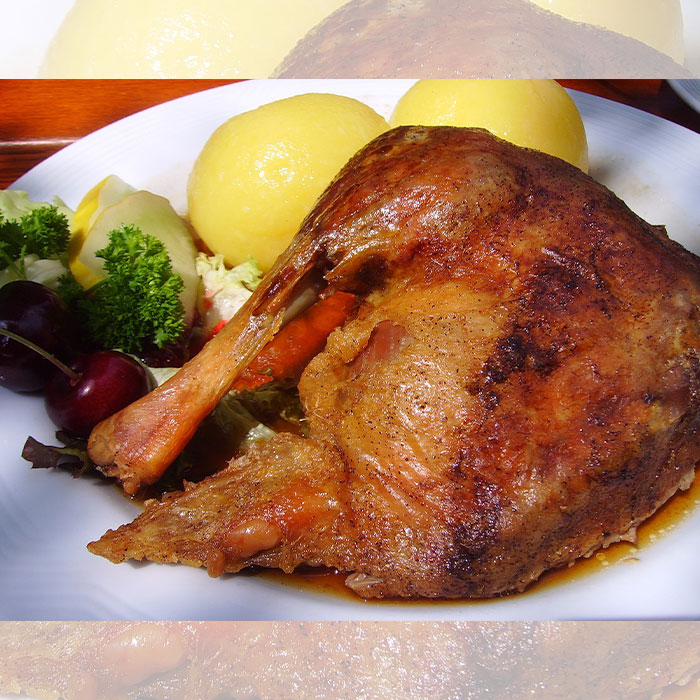
9. Tastes like beef?
Yes, Canada geese are edible and are considered very good. Some people scorn the flavour, others love it, saying the meat is more like beef than chicken; for others, it’s more like dark turkey meat or duck. Giant Canada geese weigh in at about 11 pounds and much of that is fat, especially in fall. This heavy adipose layer helps them in their migration south each winter.
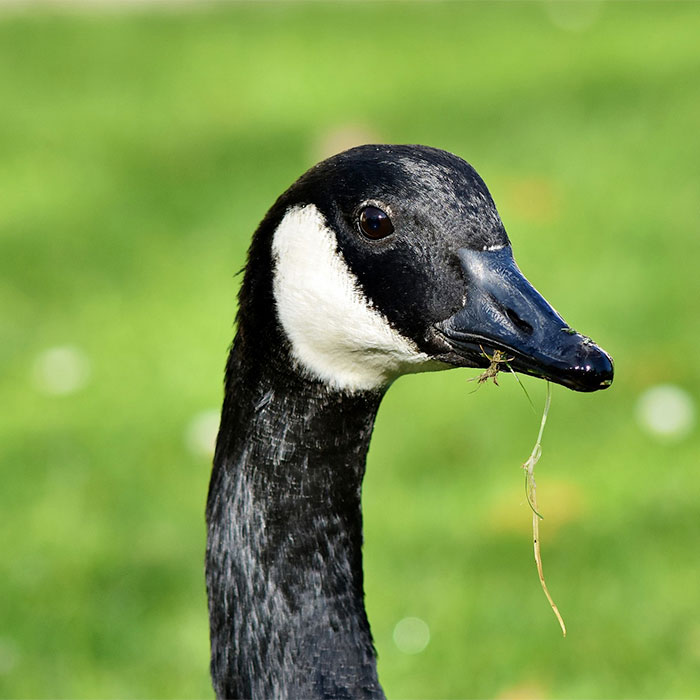
10. All the rest.
Canada geese migrate from September to November. They fly at 3,000 feet but have been seen by pilots as high as 29,000 feet. Goslings can walk, swim and find their own food immediately after hatching. Canada geese eat mainly vegetation, both aquatic and land based, but enjoy the odd juicy bug. And, by the way, their droppings average about 5.5 ounces per day (wet) and are generally disease free.
– Dorothy Dobbie and Ian Leatt Copyright©
Pegasus Publications, Inc.



